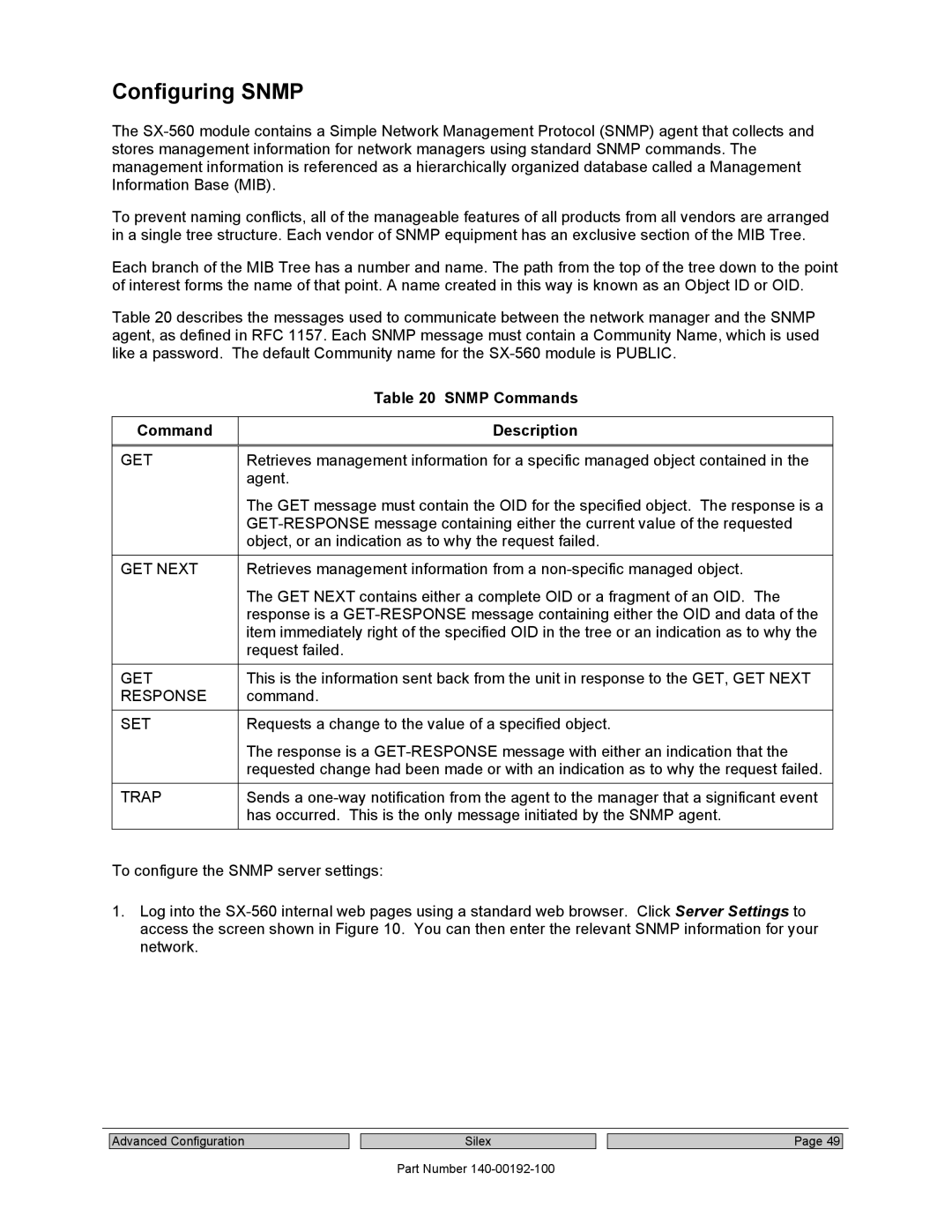Configuring SNMP
The
To prevent naming conflicts, all of the manageable features of all products from all vendors are arranged in a single tree structure. Each vendor of SNMP equipment has an exclusive section of the MIB Tree.
Each branch of the MIB Tree has a number and name. The path from the top of the tree down to the point of interest forms the name of that point. A name created in this way is known as an Object ID or OID.
Table 20 describes the messages used to communicate between the network manager and the SNMP agent, as defined in RFC 1157. Each SNMP message must contain a Community Name, which is used like a password. The default Community name for the
| Table 20 SNMP Commands |
|
|
Command | Description |
|
|
GET | Retrieves management information for a specific managed object contained in the |
| agent. |
| The GET message must contain the OID for the specified object. The response is a |
| |
| object, or an indication as to why the request failed. |
|
|
GET NEXT | Retrieves management information from a |
| The GET NEXT contains either a complete OID or a fragment of an OID. The |
| response is a |
| item immediately right of the specified OID in the tree or an indication as to why the |
| request failed. |
|
|
GET | This is the information sent back from the unit in response to the GET, GET NEXT |
RESPONSE | command. |
|
|
SET | Requests a change to the value of a specified object. |
| The response is a |
| requested change had been made or with an indication as to why the request failed. |
|
|
TRAP | Sends a |
| has occurred. This is the only message initiated by the SNMP agent. |
|
|
To configure the SNMP server settings:
1.Log into the
Advanced Configuration
Silex
Part Number
Page 49
